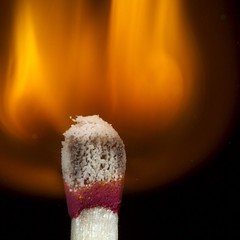(Was: Help motivate me to go beyond being a point-and-shooter)
I'm aware of the existing 'getting started with photography' questions, but what I'm asking here is slightly different:
I've had SLR cameras for years, but I've taken far more photographs with my trusty point and shoot compact, and even when I use an SLR, 99.9% of the time I have everything on automatic. (I did use manual on the older SLRs where I had no choice, but that mostly consisted of twiddling aperture and exposure time till the green light came on).
What I would find interesting is a progressive list of "if you want to get this result, you'll need to use this function", to push me outside my comfort/lazy zone and get me using my SLR's manual mode.
EDIT: already lots of great answers, thanks! Just to clarify: my question is and was about using an SLR; when I said 'being a point-and-shooter', I meant that I am using my SLR exactly as I use my compact - all automatic: point, and shoot.









